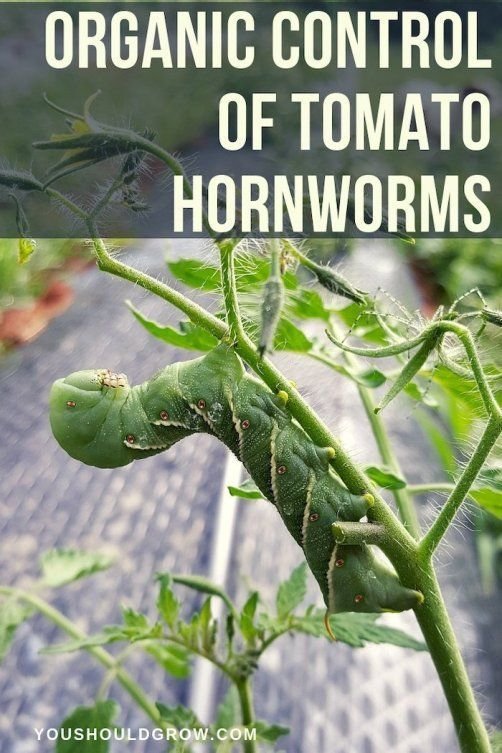
Removing hornworms without chemicals is not only possible but can also be quite satisfying. Think of it like a scavenger hunt. Instead of using harsh pesticides, there are several natural solutions that can help you reclaim your garden. Whether it’s attracting beneficial insects or using homemade sprays, there are plenty of ways to tackle this problem effectively. Let’s dive into the strategies that can keep your plants safe and healthy.
Understanding Hornworms: The Enemy Within
Before we jump into the removal methods, it’s crucial to understand who you’re dealing with. Hornworms are the larvae of moths, especially the **tobacco hornworm** and the **tomato hornworm**. These caterpillars are green, making them almost invisible against the leaves of your plants. A single hornworm can eat a tremendous amount of foliage in a short time, which is why early detection is key.
You might be wondering how to identify them apart from just their color. Look for features like their horn-like tail and the white stripes along their sides. If you spot their droppings—small, dark pellets—around your plants, it’s a clear sign that these pests are lurking. Catching them early can save your garden, so stay vigilant!
Manual Removal: The Old-School Solution
One of the simplest ways to get rid of hornworms is to remove them by hand. I know, it sounds a bit gross, but trust me, it’s effective! Put on some gardening gloves, head out to your garden, and start checking the undersides of leaves, where hornworms love to hide.
Here’s how to do it:
- **Look closely**: Examine the foliage for green caterpillars or their frass (poop).
- **Gently pick them off**: Use your fingers or a pair of tweezers to grab them. Don’t squeeze too hard!
- **Dispose of them**: You can either relocate them far away from your garden or feed them to chickens if you have any. Lucky chickens!
While this method might feel a bit like a gross treasure hunt, it’s quite literally the best way to ensure you’re tackling the problem head-on without any chemicals.
Encouraging Beneficial Insects
Another effective way to control hornworms without harsh chemicals is to **invite their natural predators** into your garden. This is where beneficial insects come into play. Certain species, like ladybugs and lacewings, love munching on small pests, including hornworms.
Here’s how to attract these helpful bugs:
- **Plant companions**: Flowers like marigolds or yarrow can attract beneficial insects.
- **Avoid pesticides**: Using harmful chemicals will deter these helpful critters.
- **Provide habitats**: Leaving some areas of your garden a bit wild can give these insects a place to thrive.
By creating an inviting environment for these beneficial bugs, you allow nature to help manage your hornworm problem organically. Just think of them as your garden’s little bodyguards!
Planting Trap Crops
Have you ever heard of **trap crops**? These are plants specifically chosen to lure pests away from your main crops. For hornworms, planting crops that they find irresistible can keep them busy while sparing your tomatoes and peppers.
Here’s how to set up trap crops effectively:
- **Choose the right plants**: Sweet corn or even tobacco plants can attract hornworms.
- **Plant strategically**: Position your trap crops in an area that’s somewhat away from your main garden.
- **Monitor regularly**: Check the trap crops often to remove any hornworms you find.
This method not only protects your main plants but also provides you with a clear target for monitoring and removal.
Homemade Sprays: A Natural Deterrent
If you’re looking for a quick solution, consider making a natural **insecticidal spray** using ingredients you probably already have at home. One popular recipe involves mixing soap and water, which can suffocate hornworms when sprayed directly onto them.
Here’s a simple recipe to try:
- **Ingredients**: 1 tablespoon of liquid soap (not detergent) and 1 quart of water.
- **Mix well**: Combine the ingredients in a spray bottle.
- **Spray directly**: Apply it on the hornworms and affected parts of your plants, preferably in the evening to avoid harming beneficial insects.
**Note**: Always test a small area first. Even natural ingredients can sometimes affect plants, so it’s good to be cautious.
Using Diatomaceous Earth
Another effective method for hornworm control is using **diatomaceous earth (DE)**. This natural powder is made from the fossilized remains of tiny aquatic organisms called diatoms. When hornworms crawl over it, the DE cuts into their exoskeletons, leading to dehydration and death.
To apply DE effectively:
- **Choose food-grade DE**: This is safe for plants and pets.
- **Sprinkle lightly**: Dust the affected areas of your garden, especially around the base of plants.
- **Reapply as needed**: After rain or heavy watering, you’ll want to reapply to keep it effective.
Using DE is not only safe but also an efficient way to manage several garden pests, hornworms included.
Regular Monitoring and Maintenance
Prevention is always better than cure, right? Regular monitoring can help catch hornworms before they become a big issue. Here are some tips to keep in mind:
- **Check your plants weekly**: Spend a little time each week inspecting your crops.
- **Look for signs of damage**: Large holes in leaves or droppings can indicate a hornworm problem.
- **Keep your garden clean**: Remove dead leaves and debris where pests can hide.
Keeping a close eye on your plants will not only help you catch hornworms early but also promote a healthier garden overall.
Dealing with hornworms can feel overwhelming, especially when you want to keep your garden organic. However, with these natural removal techniques, you can reclaim your garden without resorting to chemicals. Remember, handpicking, attracting beneficial insects, using trap crops, homemade sprays, diatomaceous earth, and regular monitoring are your allies in this battle.
So next time you spot a hornworm lurking in your garden, you’ll know just what to do. Happy gardening, and may your plants thrive, free from pests!

